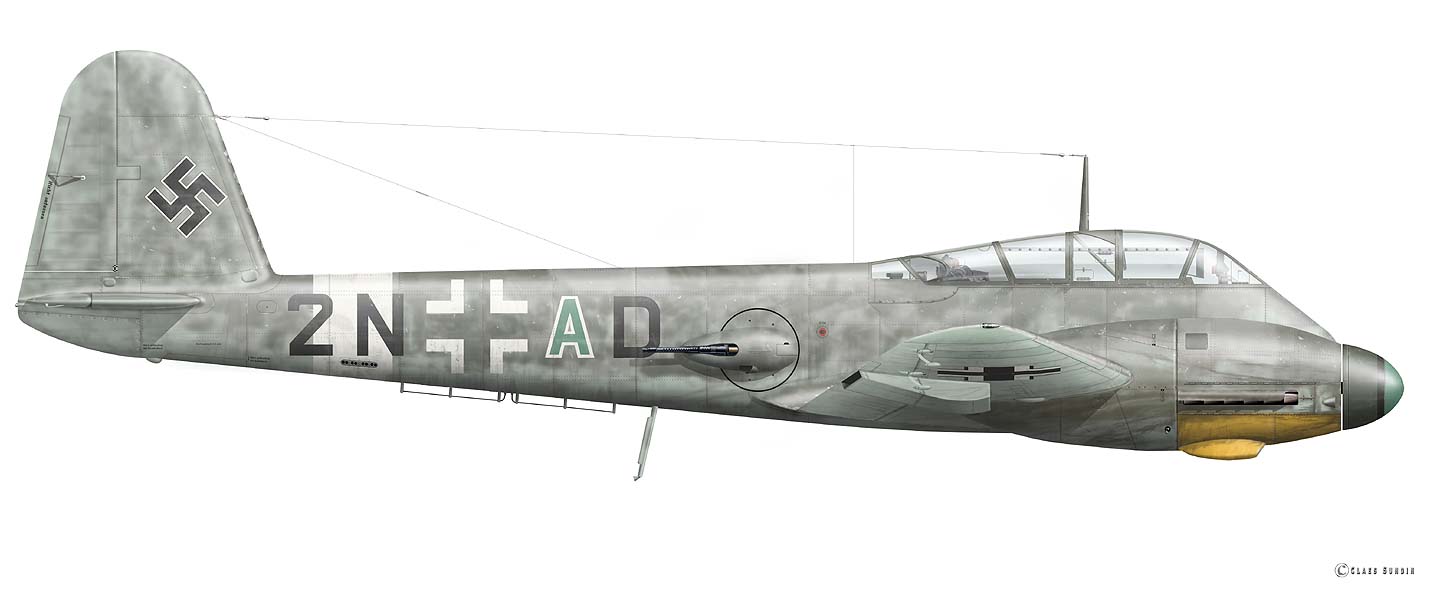


|
The story of the Messerschmitt Me 210 development problems is well known, however from a historic point of view this story has a lot of question marks. The first was that the Me 210 was to replace the most morden fighter in the Luftwaffe inventory, the Bf 110. A fighter that entered the force in 1939, a fighter that during 1940 was their most successful fighter type, and during 1941 Germanys best option for the new Night Fighter arm. Furthermore when the first Me 210 was accepted in April 1941 the Luftwaffe soon noted that the number of prototypes was not enough for the comprehensive evaluation program, both for a Zerstörer, (heavy fighter) and a Schnellbomber) fast-bomber program. During this evaluation program which a number of issues has been raised, mostly concerns regarding the stability of the new heavy fighter type. As a consequence the whole Me 210 program came under investigation in late 1941 and the recommendation was to halt the production of the Me 210 and that the Me 110 to be reinstated in production pending modification of a upgraded version or of a later design. The stop of production ment that just around 100 Me 210 had been produced with another 370 were in various stages of construction. Another result of the debacle was the Willy Messerschmitt was forced from the position as the chairman of his company. The main problem with the Me 210, its poor stability was however ironed out, the remedy was automatic slots that were installed on the wings leading edges and with a new redesigned and longer rear fuselage that was introduced, this resulted also in a more harmonic and a much better looking machine. The uprated rebuilt machines entered finally service in August 1942, reaching the KG 6 on the channel front. The Luftwaffe continued, accepted 30 in January and another 27 on February 1943, many of them reached III./ZG 1 based in the Mediterranean theatre. During early 1943 the third Gruppe of Zerstörergeschwader 1 was based at Trapani and was led by Hauptmann Wilhelm "Fritz" Hobein. The Gruppe continued to operate both the Bf 110 and the Me 210 under the command of Fliegerführer Africa after its transfer to Tunisia early 1943, and by March 1943 the III./ZG 1 had converted entirely to the Me 210 A-1 with 42 aircraft on strength. Hptm. Fritz Hobein with 10 confirmed victories under his belt would would leave the Gruppe during mid February 1943, taking up positions as the Kommandeur of I./StG 2, later I./SG 2, now flying the Junkers Ju 87 Stuka. This is one of five Me 210s made by me during the week, four of them from III./ZG 1 and the fifth a Me 210 Ca-1 from Györi Vagongyár, the Hungary Air Force. The Hungarians, manufactured the re-designed Me 210 on license with the DB 605 A engine, producing no less than 267 machines, which 108 was transferred to the Luftwaffe, according to the license agreement. Its interesting to note
that the Me 210 was very popular with the Hungarians, who prised
its maneuverable and excellent performance, they using it with
considerable effect as a dive bomber and close-support aircraft. |
|
|
|
|
|
|